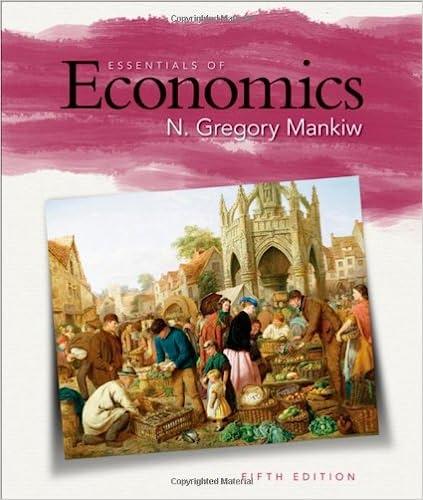Question
1. Explain the concept of opportunity costs. 2. Explain the three-sector circular flow diagram. 3. Give the difference between normative and positive economics. Give examples.
1. Explain the concept of opportunity costs. 2. Explain the three-sector circular flow diagram. 3. Give the difference between normative and positive economics. Give examples. 4. Explain the concept of production possibility frontier. 5. What are the different economic systems? Give their merits and demerits. 6. Explain the role of the price mechanism. 7. Explain the concept of market equilibrium. How do changes in demand and supply affect it? 8. Explain the concepts of consumer and producer surplus. 9. Explain the concept of price ceiling and price floors. 10. What is elasticity of demand? What are the various methods of computing elasticity of demand? 11. How are substitutes and complements explained through cross price elasticity of demand? 12. What is income elasticity of demand? 13. What is a budget constraint? How does it determine the opportunity set? 14. What is utility? What are the two types of utility? 15. Explain consumer equilibrium through cardinal utility approach for one good. Also explain it for many goods. 16. Why do sports have limited seasons? 17. Derive the demand good from the cardinal utility approach. Why does it slope downward? 18. Explain the diamond water paradox. 19. Write down the assumptions for analysis based on indifference curves (IC). 20. What is an Indifference map? What is the slope of an IC represent? 21. Explain consumer equilibrium through ordinal utility approach (Diagram, algebra and meaning). Derive the demand curve. 22. Explain the impact of changing price of a good on consumer equilibrium using Indifference Curves. 23. Draw the Indifference curves for normal goods, complements, substitutes, bads and neutral goods. 24. Explain the labour leisure decision of households. Also discuss the income and substitution effects of a wage change. 25. What choices does a profit maximizing firm make? 26. How is the short run defined in production? 27. Explain a production function. 28. Derive least cost technology using isocosts and isoquants. 29. Why does a monopolist face a downward sloping demand curve? 30. Why does a monopolist not possess a supply curve? 31. Explain the deadweight loss of monopoly. 32. Explain the efficiency of a perfectly competitive market. 33. Derive the equilibrium condition for: (a) a perfectly competitive firm; (b) For a monopoly. 34. Explain the various forms of price discrimination.
Step by Step Solution
There are 3 Steps involved in it
Step: 1

Get Instant Access to Expert-Tailored Solutions
See step-by-step solutions with expert insights and AI powered tools for academic success
Step: 2

Step: 3

Ace Your Homework with AI
Get the answers you need in no time with our AI-driven, step-by-step assistance
Get Started


